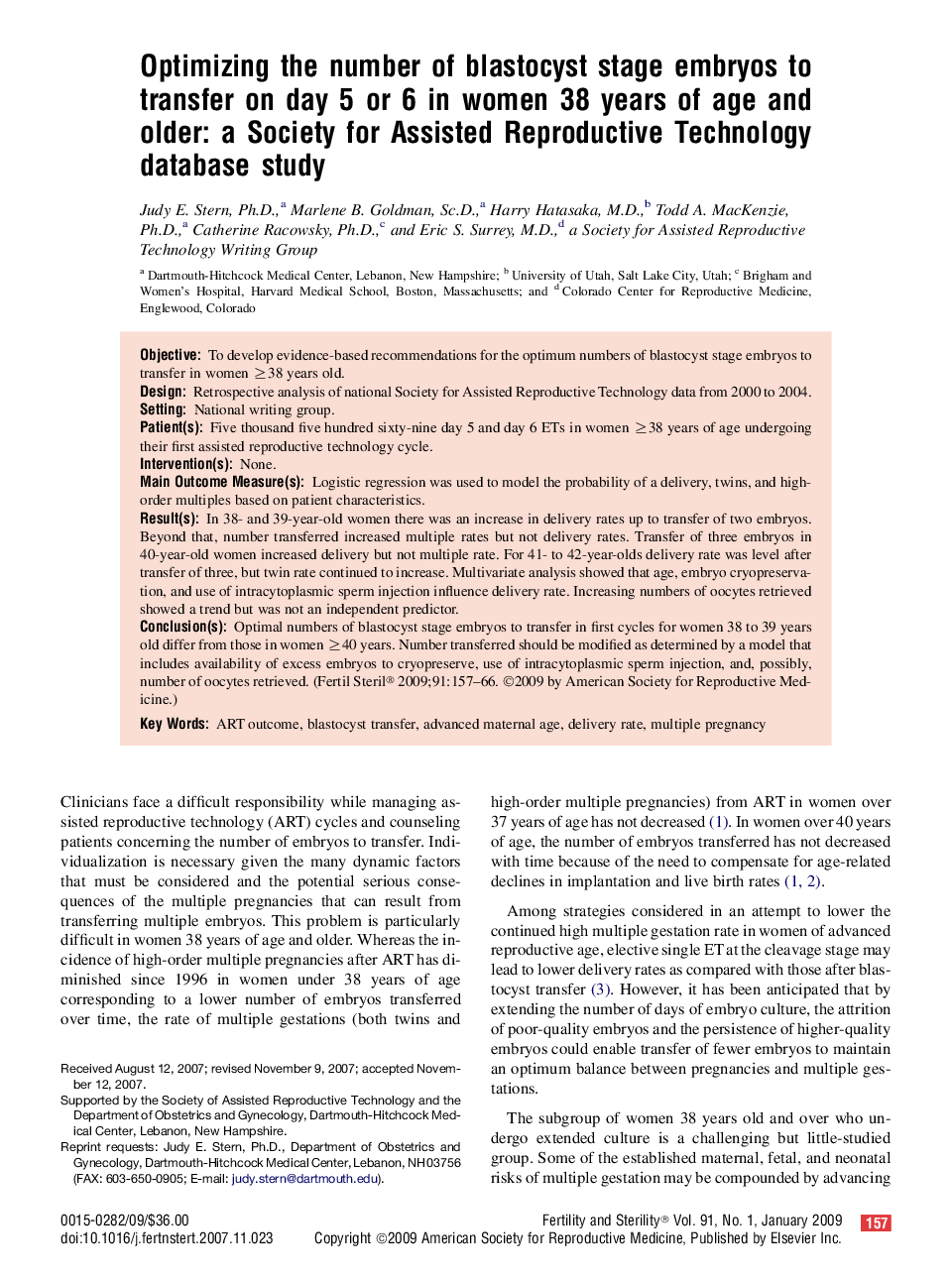| Article ID | Journal | Published Year | Pages | File Type |
|---|---|---|---|---|
| 3937061 | Fertility and Sterility | 2009 | 10 Pages |
ObjectiveTo develop evidence-based recommendations for the optimum numbers of blastocyst stage embryos to transfer in women ≥38 years old.DesignRetrospective analysis of national Society for Assisted Reproductive Technology data from 2000 to 2004.SettingNational writing group.Patient(s)Five thousand five hundred sixty-nine day 5 and day 6 ETs in women ≥38 years of age undergoing their first assisted reproductive technology cycle.Intervention(s)None.Main Outcome Measure(s)Logistic regression was used to model the probability of a delivery, twins, and high-order multiples based on patient characteristics.Result(s)In 38- and 39-year-old women there was an increase in delivery rates up to transfer of two embryos. Beyond that, number transferred increased multiple rates but not delivery rates. Transfer of three embryos in 40-year-old women increased delivery but not multiple rate. For 41- to 42-year-olds delivery rate was level after transfer of three, but twin rate continued to increase. Multivariate analysis showed that age, embryo cryopreservation, and use of intracytoplasmic sperm injection influence delivery rate. Increasing numbers of oocytes retrieved showed a trend but was not an independent predictor.Conclusion(s)Optimal numbers of blastocyst stage embryos to transfer in first cycles for women 38 to 39 years old differ from those in women ≥40 years. Number transferred should be modified as determined by a model that includes availability of excess embryos to cryopreserve, use of intracytoplasmic sperm injection, and, possibly, number of oocytes retrieved.
